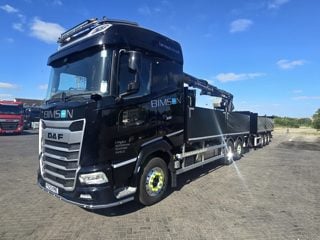Fleet operators no longer have to stick with standard fit tyres all-year round, there is a range of options.
Here we outline the pros and cons of each.
Option 1: Mixing cold weather tyres and standard tyres
Fitting cold weather tyres between October and March and standard tyres the rest of the time is the best solution, according to tyre manufacturers.
Steve Dolby, product marketing manager at Michelin, says: “We will always recommend fleets adapt their tyre policy to the seasons to benefit from maximum safety and optimum performance.”
Goodyear Dunlop suggests that even safety technology becomes obsolete if the tyres are not adjusted to the weather conditions.
Pros:
Duty of care is one of the main benefits. Dolby says: “Tests show a typical car travelling at 30mph on snow will take 48 metres to come to a halt on standard tyres, but just 24 metres if equipped with cold weather tyres – that could make a significant difference in real-life situations.”
Cold weather tyres are not just better than standard tyres in snowy conditions, as Dolby points out: “When the temperature drops to 7°C or lower, standard tyres are less effective as the rubber hardens, affecting performance and grip.”
There is a strong case for fitting cold weather tyres for organisations that need to respond to emergencies.
East Midlands Ambulance Services NHS Trust has fitted cold weather tyres to 306 ambulances and fast response cars for the past two winters.
Steve Farnsworth, fleet general manager, says: “Our vehicles need to be fully prepared for even the most hazardous conditions.
“When we receive an emergency 999 call we need to react as promptly and safely as possible, and fitting cold weather tyres is key to tackling any bad weather which might delay us from reaching our patients.”
Similarly, companies that need to deliver to customers, such as Tesco.com and AAH Pharmaceuticals, have seen a benefit from fitting cold weather tyres in the winter.
Approximately two-thirds of the cold weather tyres fitted by ATS Euromaster during winter 2012/2013 were for vans and light commercial vehicles.
In theory, fitting cold weather tyres in winter and standard tyres for the rest of the year should mean tyres last longer.
Peter Lambert, fleet director at Kwik Fit, says: “Depending on vehicle mileage, winter tyres could last for two or even three winters.
"As a result, wear and tear suffered by standard tyres, which is increased in harsh road conditions, is reduced so postponing their replacement.”
Cons:
Cold weather tyres cost more than standard tyres.
Companies will also have the cost of taking tyres on and off and storage in a tyre ‘hotel’, unless they have their own storage facilities, although advocates argue the benefits outweigh the cost.




















Login to comment
Comments
No comments have been made yet.